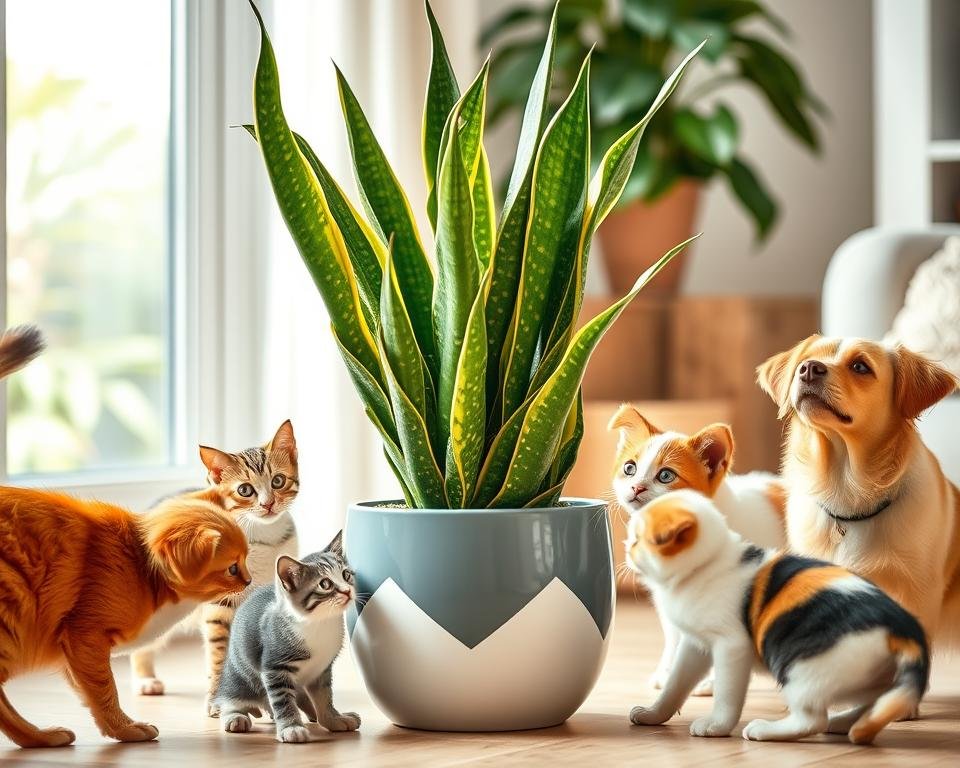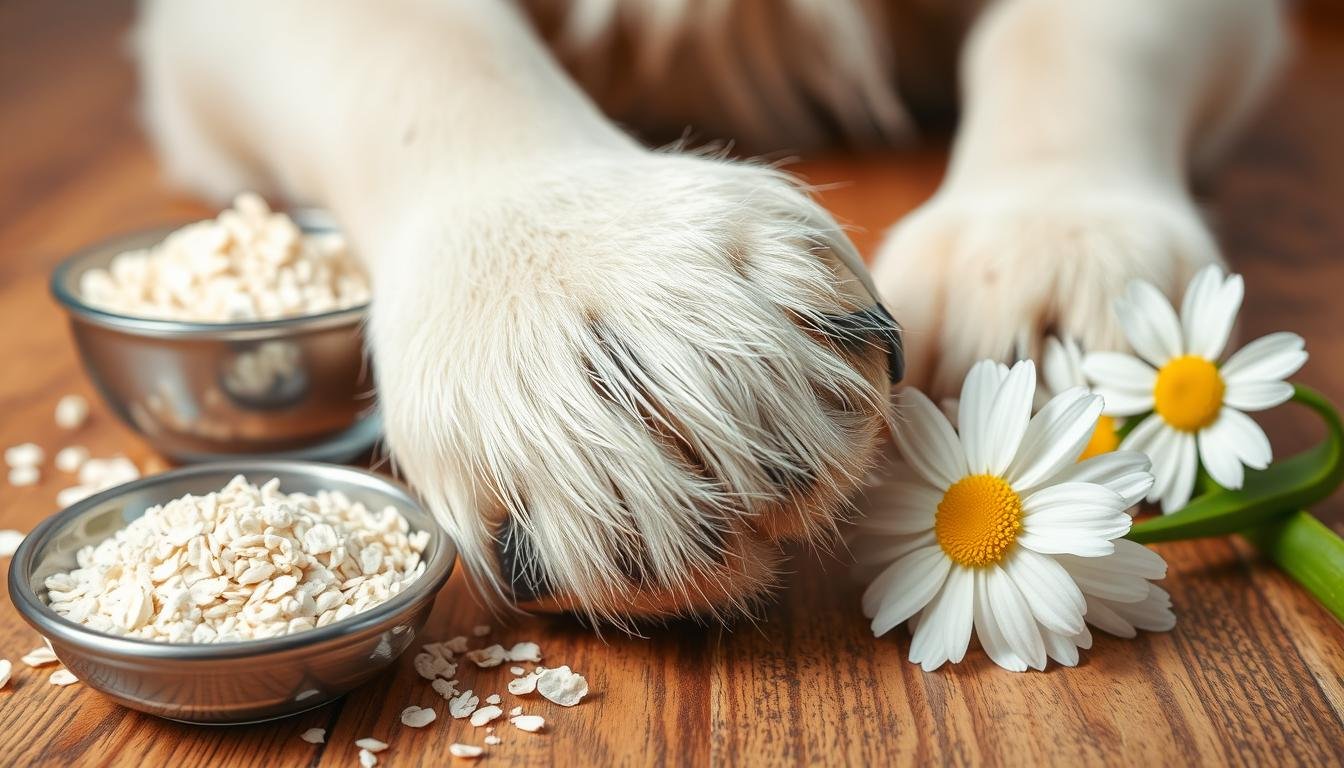As a proud pet owner, you want to keep your furry friends safe. This includes making sure your home is pet-friendly. But, are snake plants safe for your cats and dogs? Let’s explore the truth about snake plant toxicity and how to protect your pets.
Understanding Snake Plants: Common Names and Identification
Snake plants, also known as Dracaena trifasciata, are loved by many for their beauty and toughness. They are known by names like mother-in-law’s tongue and viper’s bowstring hemp. Their leaves, which look like grass, grow upright or spread out.
Different Varieties and Botanical Names
The Sansevieria genus has about 70 snake plant species. Each has its own look. Some popular ones are the Bird’s Nest and the Twisted Sister. These plants come from places like Africa and Madagascar.
Physical Characteristics and Growing Habits
Snake plants have strong, variegated leaves that can grow tall. They can handle low light and even forgetfulness. This makes them great for people who don’t have a green thumb.
Popular Indoor Plant Benefits
Snake plants are not just pretty; they also clean the air. They turn carbon dioxide into oxygen, which is good for us. They’re also good for places like hospitals. Plus, they’re thought to help people feel better.
| Variety | Botanical Name | Characteristics |
|---|---|---|
| Bird’s Nest Snake Plant | Dracaena trifasciata ‘Hahnii’ | Dwarf rosette species growing to 6 inches |
| Twisted Sister | Dracaena angolensis var. patula ‘Boncel’ | Spreads from the base like a fan on one flat plane, with thicker and shorter leaves than the straight species |
| Samurai Dwarf | Dracaena hanningtonii ‘Samurai Dwarf’ | Slowly grows to 6 inches with thick, short, V-shaped leaves with red edges |
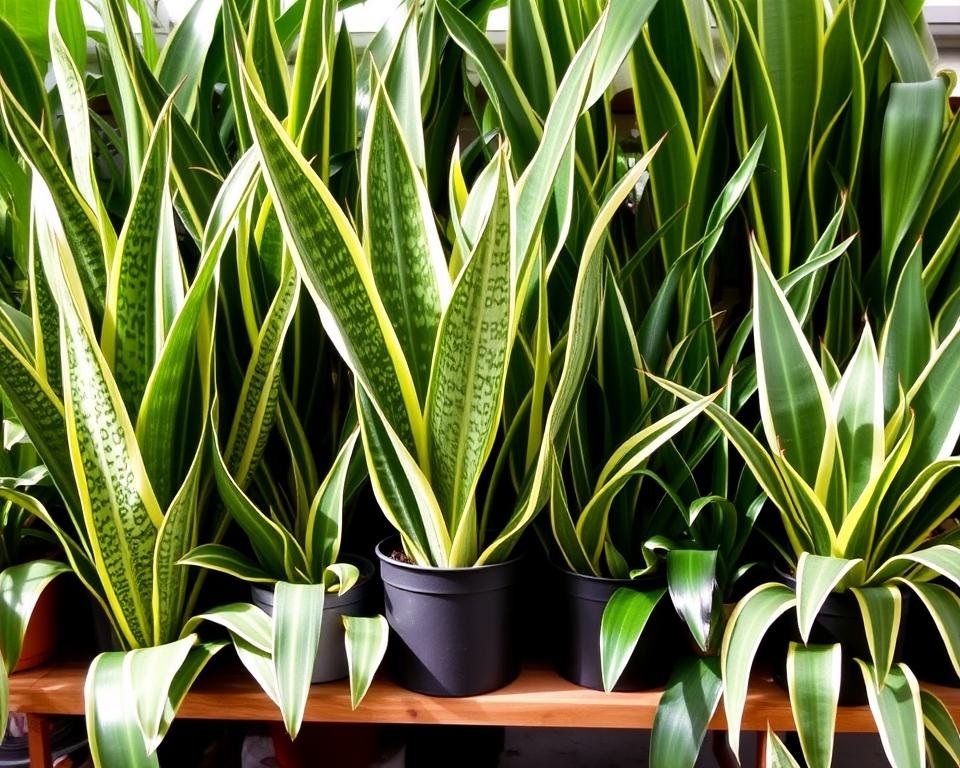
Snake plants are perfect for anyone who wants a low-maintenance plant. They clean the air and look great. They’re a smart choice for anyone who wants to make their space better.
Are Snake Plants Toxic to Cats and Dogs
Snake plants, also known as sansevieria or mother-in-law’s tongue, are popular for indoor spaces. But, they can be harmful to our furry friends. These plants have saponins, which can cause mild to moderate toxicity in cats and dogs if eaten.
The leaves of the snake plant are the most dangerous part. They have the most saponins. If a cat or dog eats a lot of the plant, they might feel sick, vomit, or have diarrhea. In bad cases, they could have trouble breathing or feel very tired.
But, snake plant poisoning is rarely deadly in pets. The symptoms’ severity depends on how much they ate. If you think your pet ate the plant, act fast.
| Symptoms of Snake Plant Toxicity in Pets | Severity Level |
|---|---|
| Mouth irritation, nausea, vomiting, diarrhea | Mild |
| Lethargy, loss of appetite | Moderate |
| Difficulty breathing, confusion | Severe |
If you think your cat or dog ate a snake plant, call your vet right away. They can tell you what to do next. This might include making them vomit or giving them care to help them feel better.
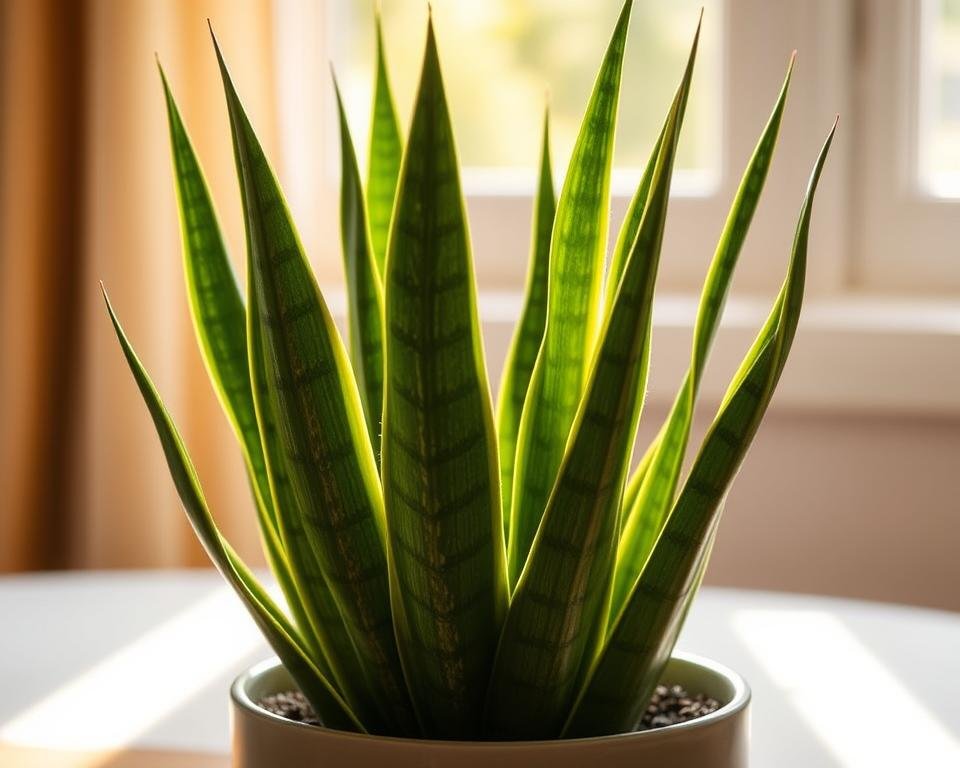
To keep your pets safe, it’s wise to avoid having snake plants at home. If your pets like to explore, pick safer plants. Spider plants, Boston ferns, or African violets are good choices.
Symptoms of Snake Plant Poisoning in Pets
Snake plants, also known as Mother-in-Law’s Tongue, contain toxic substances called saponins. These can harm cats and dogs. If pets eat them, they might get sick. Owners should watch their pets closely.
Common Signs of Toxicity
Snake plant toxic to cats and is snake plant toxic to dogs can show several symptoms. These include nausea, vomiting, diarrhea, and dilated pupils. The saponins in the plant can upset a pet’s stomach and affect how they digest food and water.
Severity Levels Based on Consumption
- Mild symptoms: If a pet eats a small part of the plant, they might feel sick. This can include nausea, vomiting, and diarrhea.
- Severe symptoms: Eating a lot of the plant can lead to more serious problems. The saponins can harm red blood cells and cause anemia.
When to Seek Emergency Care
If your pet eats a snake plant, get help right away. Don’t try to make them vomit without a vet’s advice. Vets can give treatments like fluids or medicine. Quick action is key to keeping your pet safe.
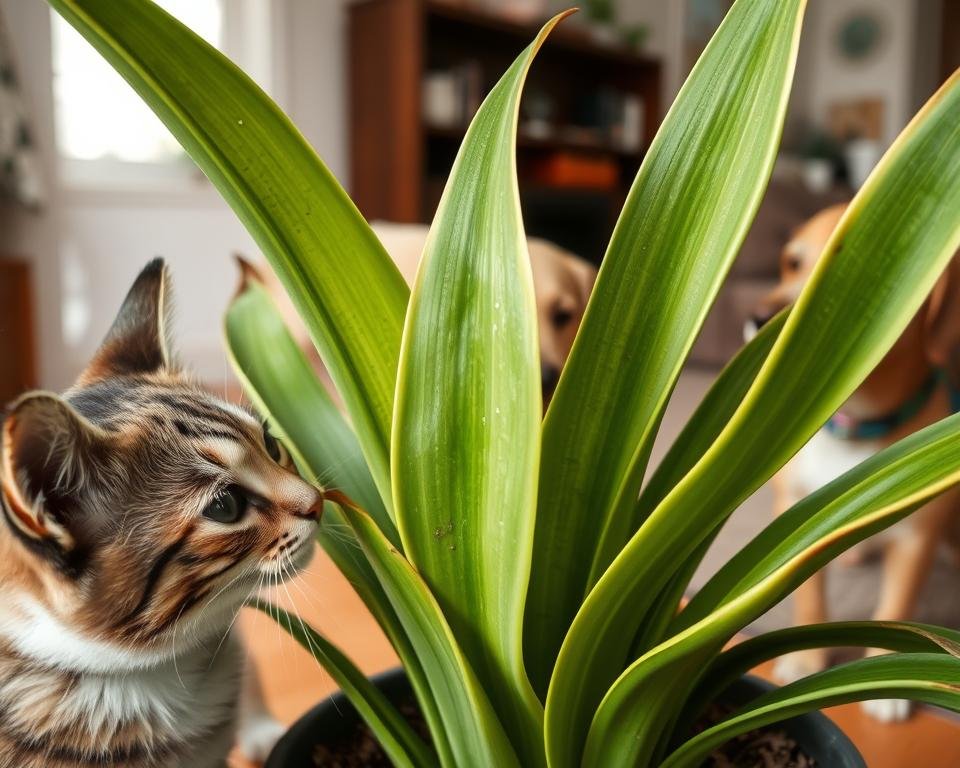
“Immediate veterinary attention is required if a cat ingests any amount of snake plant or other plant containing saponins to mitigate toxic effects.”
Immediate Actions for Pet Owners After Plant Ingestion
If your cat or dog has eaten a snake plant, also known as Sansevieria, act fast. These plants are popular but can be harmful to pets because of their toxic saponin compounds.
First, call your vet or the nearest animal hospital right away. Do not try to make your pet vomit unless a vet tells you to. Instead, try to figure out which snake plant your pet ate. Bring a sample or a clear photo to show the vet.
It’s also key to keep your pet away from the plant. Remove the plant from your pet’s reach. If your pet is very curious, consider removing it from your home.
Symptoms of snake plant toxicity in pets show up quickly. They may include nausea, vomiting, diarrhea, tiredness, and changes in heart rate and blood pressure. Getting your pet to the vet fast is very important for their safety and health.
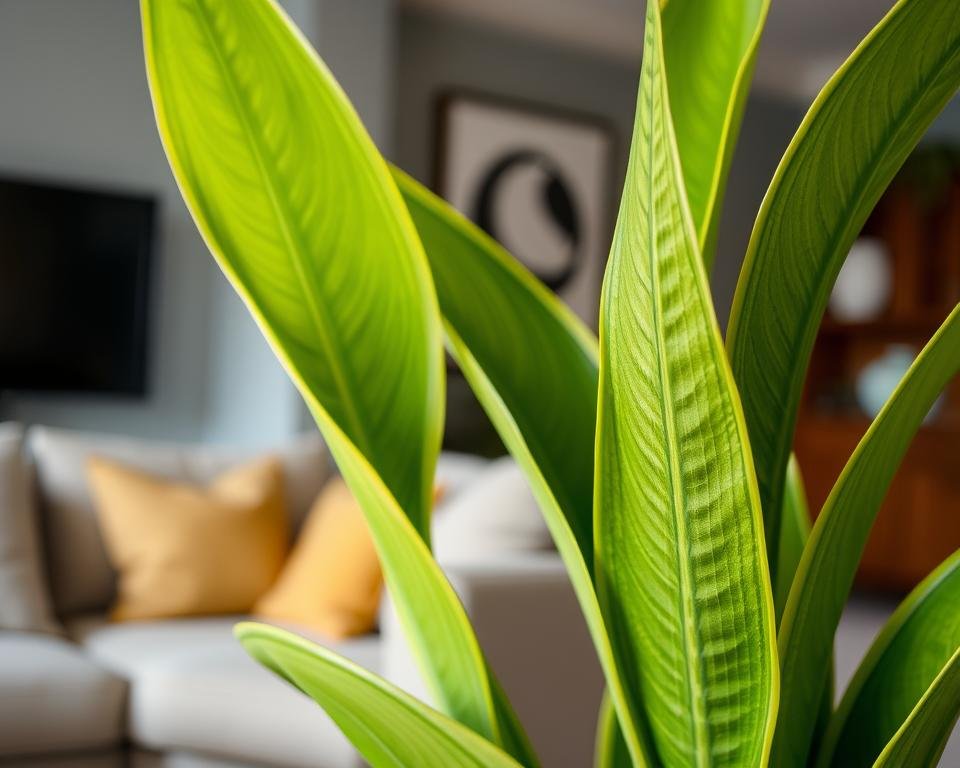
“Veterinary professionals play a vital role in educating pet owners about toxic houseplants and providing guidance in emergencies.”
When it comes to suspected plant poisoning, time is critical. By acting quickly and following your vet’s advice, you can help lessen the effects of snake plant toxicity. This will help your pet recover faster.
Pet-Safe Alternatives to Snake Plants
As pet owners, we want our homes to be safe and beautiful. The snake plant is pretty but not safe for pets. Luckily, there are many safe plants that look great and keep our pets safe.
Non-Toxic Indoor Plants
Here are some safe plants for your home:
- Bamboo Palm (Chamaedorea seifrizii)
- Spider Plant (Chlorophytum comosum)
- Prayer Plant (Maranta leuconeura)
- Boston Fern (Nephrolepis exaltata)
- Areca Palm
- Money Tree
- Gerbera Daisies (Gerbera jamesonii)
- Orchids
- Succulents (Echeveria and Haworthia)
Similar Looking Safe Options
If you like the look of the is mother in law tongue plant poisonous to cats, try these:
- Ponytail Palm (Beaucarnea recurvata) – Drought-tolerant with cascading grass-like foliage
- Zebra Calathea (Calathea zebrina) – Stunning striped foliage, requires more water and humidity
- Cast Iron Plant (Aspidistra elatior) – Sword-like foliage that thrives in low-to-medium light
Care Requirements Comparison
| Plant | Light Needs | Water Requirements | Humidity Preference |
|---|---|---|---|
| Ponytail Palm | Bright, indirect light | Drought-tolerant | Moderate |
| Zebra Calathea | Moderate to bright, indirect light | Moderate to high | High |
| Cast Iron Plant | Low to medium light | Moderate | Moderate |
These safe plants let you enjoy your home without worrying about your pets. You can pick from many plants that look like the is mother in law tongue plant poisonous to cats. This way, you can make a beautiful, safe space for everyone.
Conclusion
Snake plants are popular, but they can be harmful to cats and dogs. They have toxic properties that can cause serious health issues. Symptoms include nausea, vomiting, and even swelling in the mouth or throat.
Even a small amount of the plant can be dangerous. So, it’s important to keep snake plants out of reach of pets.
Instead, consider safer options like spider plants, areca palms, and Boston ferns. These plants are non-toxic and can clean the air without the risk of poisoning. By choosing safe plants, pet owners can enjoy their homes while keeping their pets healthy.
Deciding whether to have snake plants at home involves weighing risks and benefits. With careful planning and a focus on pet safety, it’s possible to create a safe and beautiful indoor space for both plants and pets.
FAQ
Q: Are snake plants toxic to cats and dogs?
A: Yes, snake plants (Dracaena trifasciata) can be mildly to moderately toxic to dogs and cats. They contain saponins, which can cause symptoms when eaten.
Q: What are the common symptoms of snake plant poisoning in pets?
A: Pets may show signs like nausea, vomiting, and diarrhea if they eat snake plants. They might also drool more and have big pupils. Symptoms can range from mild to severe, and in bad cases, it can even cause red blood cells to burst.
Q: What should pet owners do if their pet ingests a snake plant?
A: If a pet eats a snake plant, call the vet or an emergency animal hospital right away. Don’t make them vomit unless a vet tells you to. Try to get a picture of the plant or bring a piece to show the vet. Also, make sure your pet can’t eat more of the plant.
Q: What are some pet-safe alternatives to snake plants?
A: Safe alternatives to snake plants include cast iron plants, ponytail palms, spider plants, and zebra calathea. These plants look good and are safe for pets.
Q: What is the botanical name for snake plants?
A: Snake plants are known scientifically as Dracaena trifasciata. They were once called Sansevieria trifasciata. They’re also known as mother-in-law’s tongue, golden bird’s nest, and viper’s bowstring hemp.

